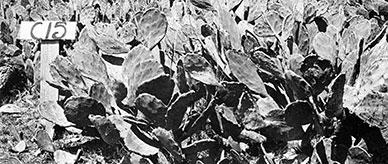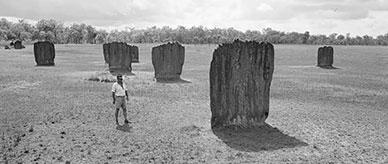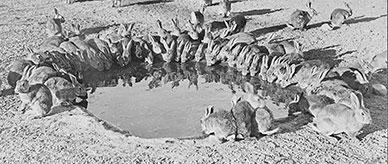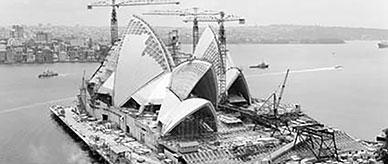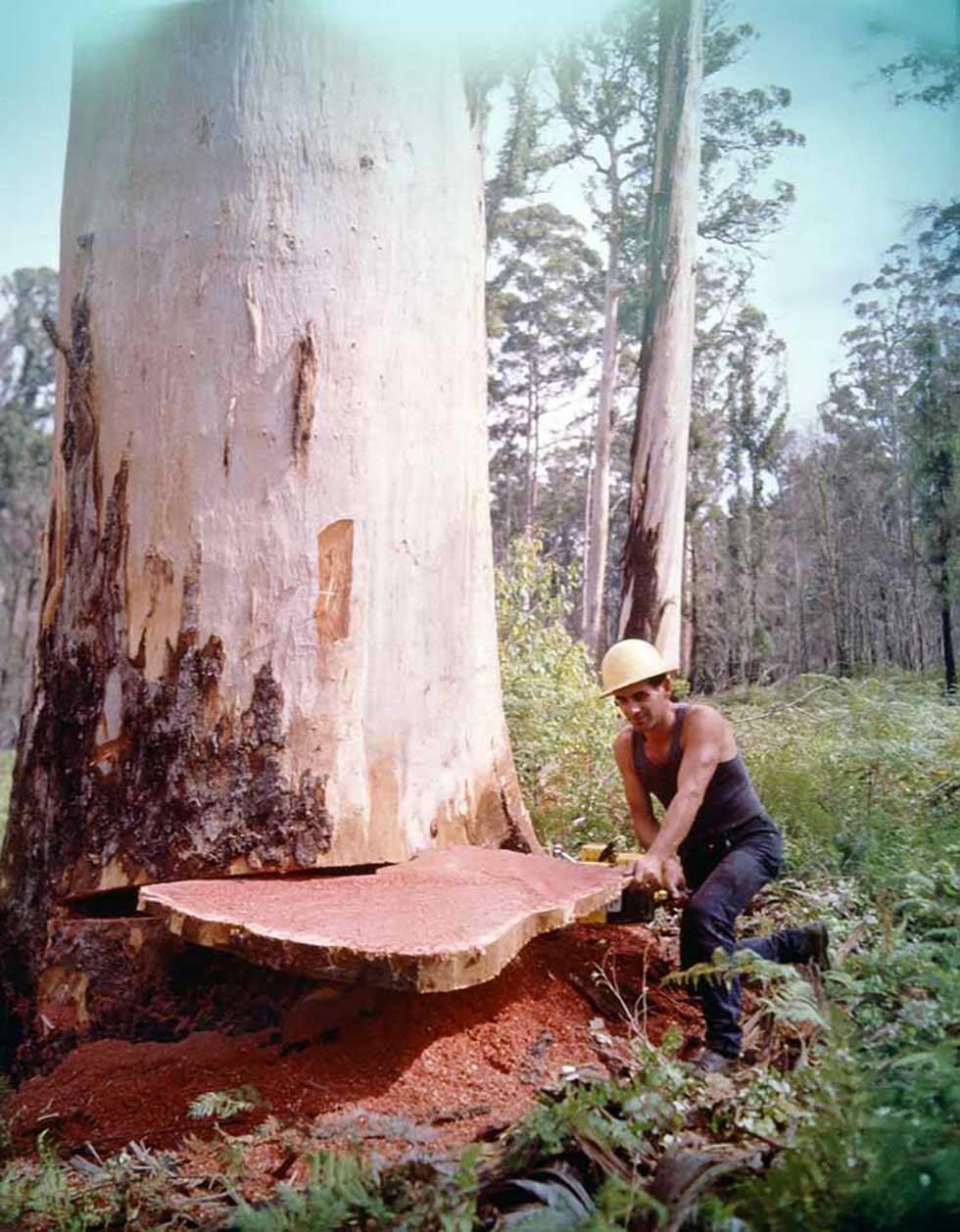


About this record
This is a colour photograph of a tree feller using a chainsaw to fell a 50-metre karri tree in Western Australia in 1966. At the base of a large karri, the tree feller has a wedge—almost half the width of the trunk—which he will reinsert to prevent the tree from falling the wrong way.
Educational value
- This photograph shows a forest of giant karri (Eucalyptus diversicolor) in the southern forest region of the southwest of Western Australia. These towering trees grow straight, up to 80 metres high, and achieve a massive girth after 300 to 400 years of growth. Southwest WA contains world-renowned areas of significant biodiversity, and old-growth karri forests typically have an undergrowth of ferns that is lost during logging.
- The karri being felled in this photograph is in one of Australia’s native forests. In 1788 an estimated 32 per cent of the continent was covered by native forest. Today the figure is 21 per cent and continuing to decline—a result of the clearing of forests (including plantations) for agriculture and urban development.
- The man in the photograph is using a chainsaw. Before the advent of the chainsaw, two men using axes and a push-pull saw would have taken 3–4 hours to fell a karri the size of the one in this photograph.
- Native forests were logged before the damaging effects of unrestrained logging were understood in the community. Today only small sections of original old-growth karri forest remain in national parks and other protected areas—but some karri is still logged in regrowth areas and plantations for project and craft uses.
- Timber is felled for use in a variety of timber products. Karri timber is valued for furniture and flooring because of its grain and straightness, and for structures (such as houses) because of its great strength.
Acknowledgments
Learning resource text © Education Services Australia Limited and the National Archives of Australia 2010.
Related themes
Need help with your research?
Learn how to interpret primary sources, use our collection and more.

